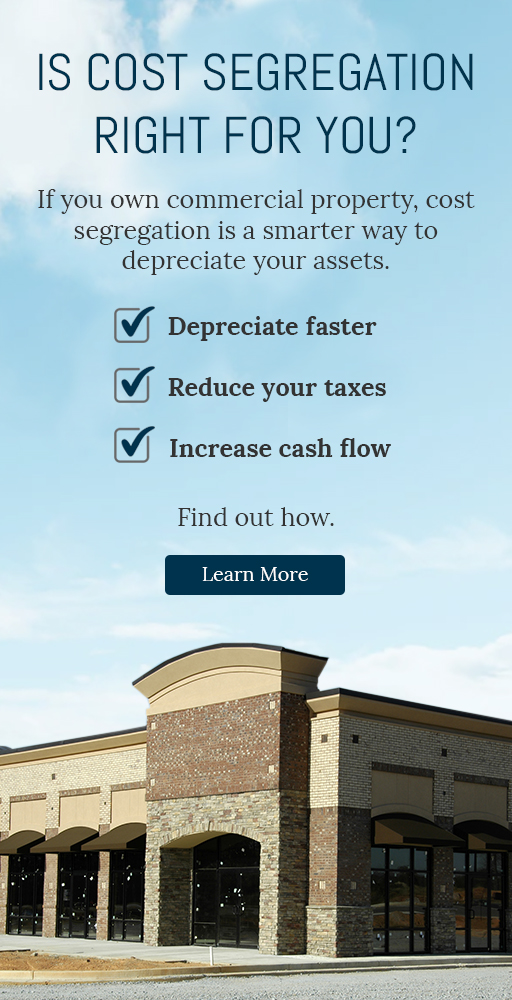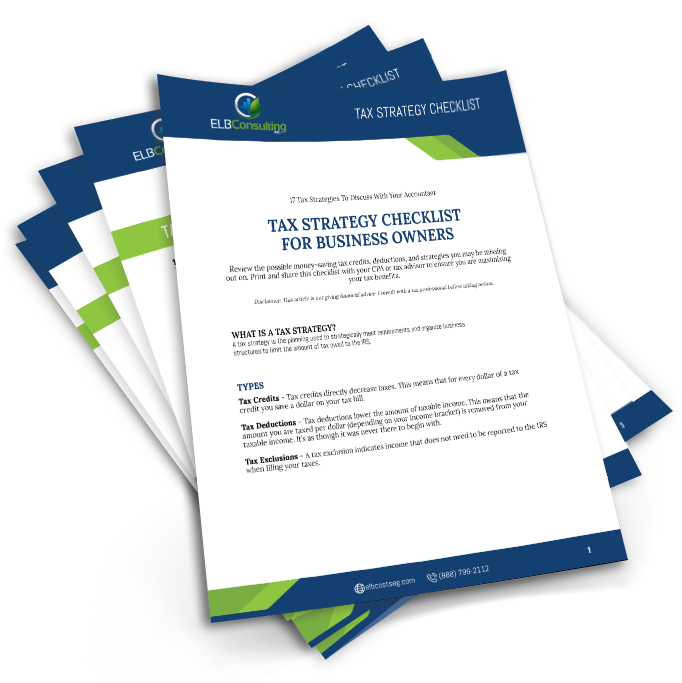Specialty Tax Solutions can deliver substantial relief…
Are you or your clients missing federal tax deductions associated with your real estate? Or failing to cash in on available federal tax incentives/credits for energy-efficient structures or subsystems? Or not benefiting from your firm’s innovation efforts or Intellectual Property?
The I.R.S. tax code offers federal tax incentives to Commercial Real Estate (CRE) developers and owners, and business owners alike; a few are summarized below.
Cost Segregation accelerates depreciation to increase cash flow
A cost segregation identifies and reclassifies assets to shorten the depreciation time for taxation purposes, which leverages ‘the time value of money’. The primary goal of a cost segregation study is to identify all construction-related costs that can be depreciated over a shorter tax life, thereby increasing the tax deductions and improving cash flow.
Using an “engineered methodology”, something a CPA is typically not trained to do, the qualified components of the structure can be documented and depreciated based on IRS guidelines, maximizing allowable deductions. By depreciating these assets more quickly, you release cash for operations or further investment.
“Cost segregation is not a tax shelter. It is an I.R.S. defined and guided tax reduction tool. Ninety-percent of all commercial property investors are overpaying their federal income taxes”, The Journal of Accountancy
Tax Incentives via the Energy Policy Act (EPAct) of 2005
In addition to cost segregation deductions EPAct 2005 energy incentives for developers of energy efficient properties through the end of 2016. We anticipate it being extended, but even though 12/31/2016 has passed, these benefits are still available for past years. EPACT 2005 looks at the building subsystems, with the goal of reducing the property’s carbon footprint.
The 179D Energy Tax Deduction can result in a deduction of up to $1.80 per square foot.
The 45L New Energy Efficient Home Tax Credit, of interest to any developer of multi-family apartments provides up to $2,000 per residential unit that meets the energy efficiency standards
Research & Development (R&D) Tax Credit
In case you missed it, with legislation enacted in December 2015, federal R&D Tax Credits have been made permanent and been simplified for start-ups, who can apply the credit to their FICA tax. And small companies to reduce their AMT (alternative minimum tax). They’re not just for the Fortune 500.
Startups are defined as less than 5 years old, and less than $5M in annualized gross receipts. Small companies are defined as less than $50M in annual revenues.
The R&D Tax Credit provides incentives to nearly every industry for qualified research and development activities, which lowers the after-tax cost of innovation activities. The tax credit is equal to a percentage of a business’ qualified research expenses (QREs).
These specialty solutions are definitely worth evaluating…
Allow ELB Consulting to help evaluate how these specialty tax solutions can reduce your taxes, thus increase cash flow. Our national team of experts in cost segregation, R&D tax credits, tax-friendly building designs, energy tax incentives, abandonment tax studies, and more will help you assess potential opportunities.
Contact us today for a complimentary review and Feasibility Analysis of appropriate specialty tax services for you or your clients.
You may be missing out on tax benefits.
Own commercial property?
We can help you find smarter ways to depreciate your property and reduce your taxes. Tell us about yourself and we’ll see how much you could be saving.




